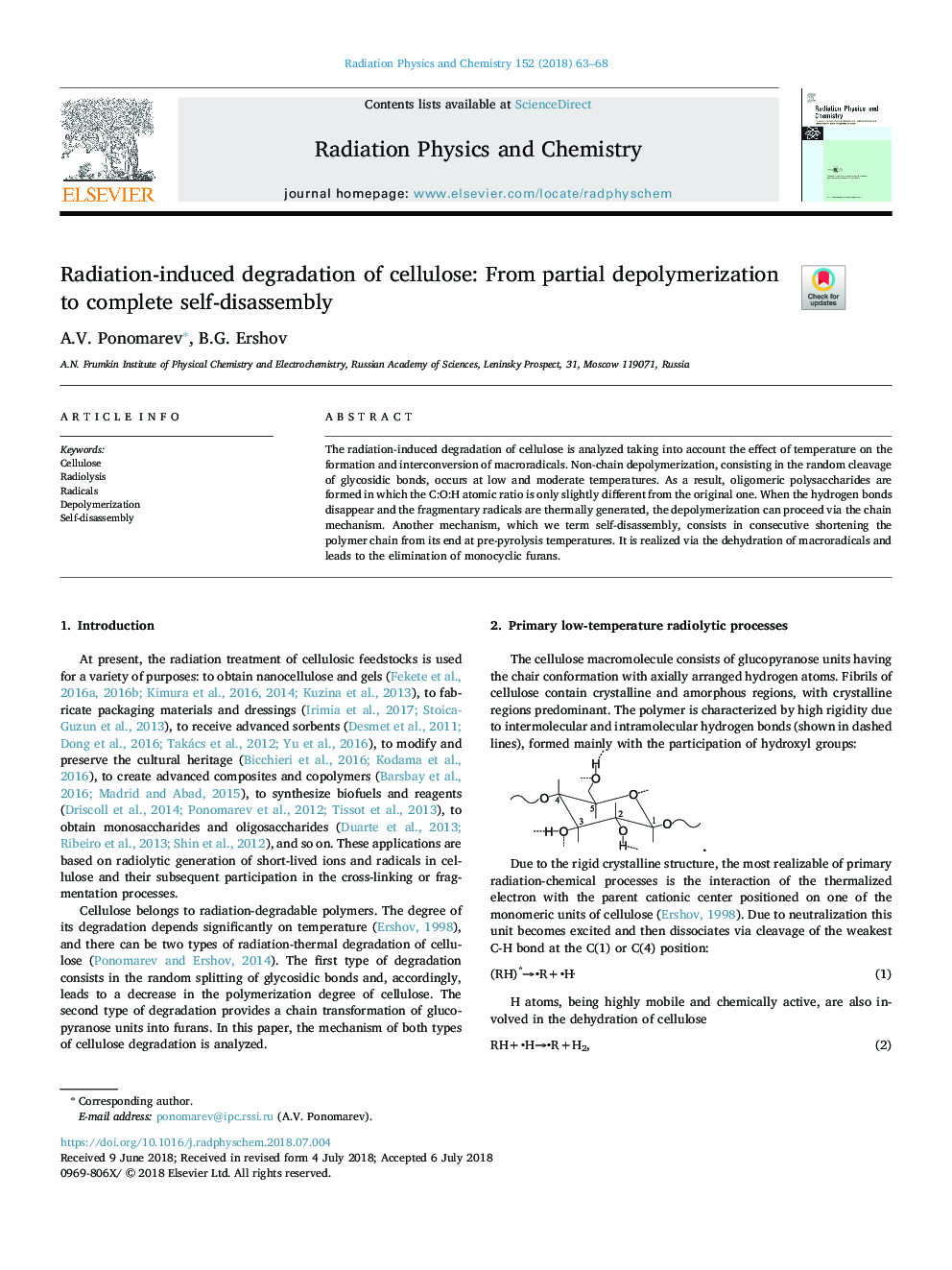| Article ID | Journal | Published Year | Pages | File Type |
|---|---|---|---|---|
| 8251103 | Radiation Physics and Chemistry | 2018 | 6 Pages |
Abstract
The radiation-induced degradation of cellulose is analyzed taking into account the effect of temperature on the formation and interconversion of macroradicals. Non-chain depolymerization, consisting in the random cleavage of glycosidic bonds, occurs at low and moderate temperatures. As a result, oligomeric polysaccharides are formed in which the C:O:H atomic ratio is only slightly different from the original one. When the hydrogen bonds disappear and the fragmentary radicals are thermally generated, the depolymerization can proceed via the chain mechanism. Another mechanism, which we term self-disassembly, consists in consecutive shortening the polymer chain from its end at pre-pyrolysis temperatures. It is realized via the dehydration of macroradicals and leads to the elimination of monocyclic furans.
Related Topics
Physical Sciences and Engineering
Physics and Astronomy
Radiation
Authors
A.V. Ponomarev, B.G. Ershov,
